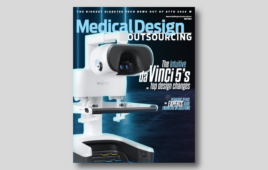
IBM says its prototype fingernail sensor could help detect cardiovascular and neurological conditions.
IBM has developed a fingernail sensor that it says may help healthcare providers fine-tune treatment for certain cardiovascular and neurological conditions such as Parkinson’s disease.
The wearable, wireless device measures how a person’s fingernail bends and moves throughout the day – a key indicator of grip strength. The prototype sensor continually collects data and feeds it into artificial intelligence algorithms, picking up patterns that reveal the wearer’s grip strength and movement over time. The sensor is designed to be worn throughout the day without interfering with daily tasks.
Currently, measuring grip strength is done in moments in time at a provider’s office. However, this singular view does not provide a holistic view of how grip strength varies hour-to-hour, task-to-task and can be used to view and predict disease existence and/or progression, the company said.
A study on the fingernail sensor was published today in Nature Scientific Reports. Although most tasks involve direct fingertip pad contact with an object, nails enhance both the fingers’ gripping and sensing capabilities by focusing the fingertip on the object being manipulated, the researchers wrote. Humans also use their fingernails for as tools for scratching, picking, cutting, scraping, managing tiny objects or as a weapon, they added.
The researchers tested two configurations of the sensor, one in which the electronics ride on a silicone prosthetic on the nail and another in which the electronics were placed on the skin with a gasket. Test subjects wore a Series 3 Apple watch to receive the raw data, which was sent via a paired iPhone on to cloud-based machines for retention, analysis and model training.
“Hand strength has been correlated with general health-related quality of life,” they wrote, citing a previous study on grip strength. “Other studies showed that greater hand strength was positively related to cardiac function, central nervous system health, and cognitive performance among people with schizophrenia.”
The prototype used rigid, printed circuit boards and a large metal foil strain gauge package. These would be replaced by wafer-level, chip-scale packaging, a flexible substrate, and tiny silicon strain gauges to allow the nail to move more freely. The future system would have to be waterproof and might give the wearer immediate feedback on injury-producing motions.
“The system is small enough to be worn on a finger, does not interfere with tactile sensing or haptic perception, and is sturdy enough to wear while throwing a baseball,” the researchers concluded.
See the prototype in action here.




![A photo of the Medtronic GI Genius ColonPro polyp detection system flagging a potential sign of colon cancer during a colonoscopy. [Photo courtesy of Medtronic]](https://www.medicaldesignandoutsourcing.com/wp-content/uploads/2024/04/Medtronic-GI-Genius-doctors-268x170.jpg)
My dad died from Parkison’s disease. Anything technology that can help monitor and hopefully reduce the effects is welcome.